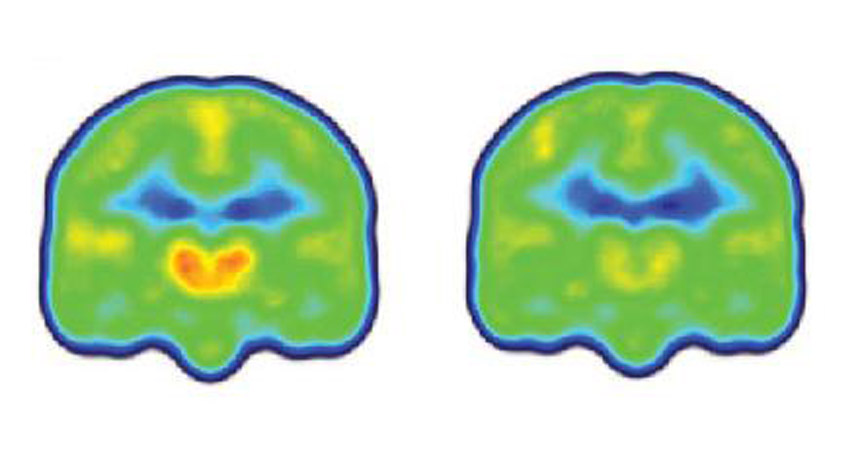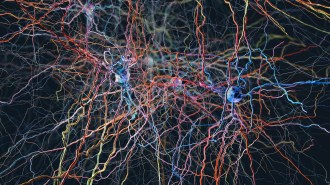Protectors of our nervous system play a role in pain

People with chronic pain (left) have higher levels of a protein linked with inflammation (orange and red) in their brains than people without chronic pain (right), suggesting that the cells that protect the brain may also cause pain.
Marco Loggia, Massachusetts General Hospital






